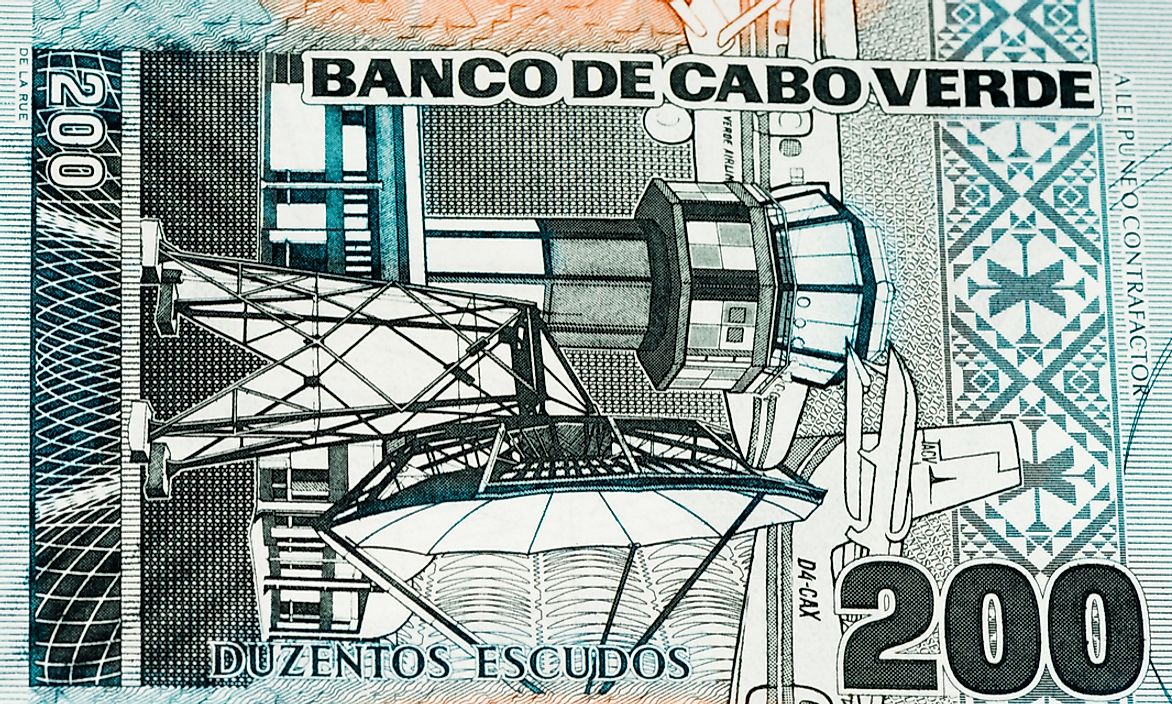What is the Currency of Cabo Verde?

The official legal tender used in the Republic of Cape Verde is the Cape Verdean Escudo which is divided into 100 centavos. The currency symbol for the Escudo is Esc while the currency code is CVE. Currently, 1 Cape Verdean Escudo = 0.010277 USD.
History of the Cape Verdean Escudo
In 1914, the Escudo became the official currency of Cabo Verde replacing the real at a rate of 1 Escudo = 1,000 reis. The country was using Portuguese coins until 1930, despite bank notes being issued specifically for Cabo Verde during the start of 1865 by the Banco Nacional Ultramarino. The Cape Verdean Escudo was equal to the Portuguese Escudo until the country gained its independence from Portugal in 1975. However, between 1977 and 1978 the Cape Verdean Escudo subsequently depreciated by 30% and it further declined by 40% between 1982 and 1984. After the decline, the Cape Verdean Escudo remained relatively stable against the Portuguese counterpart. Around mid-1998, Cabo Verde and Portugal made an agreement which established a pegged rate of 1 Cape Verdean Escudo = 1.82 Portuguese Escudo. However, since Portugal replaced its currency with the Euro, Cabo Verde's Escudo is now pegged to the Euro at a rate of 1 Cape Verdean Escudo = 0.0090 Euros. A credit facility from the government of Portugal supports the peg.
Overview of the Cape Verdean Escudo
For a decade now, the Cape Verdean Escudo has been stable against the Euro. However, high-interest rates and controls are required to prop the currency up and prevent it from depreciating. Currently, 1 Euro = 110 Escudos while 1 Sterling Pound = 146 Escudos. Banknotes are in denominations of 500, 1,000, 2,000, and 5,000 Escudos whereas coins are in denominations of 1, 5, 10, 20, 50, 100, and 200 escudos. In Cabo Verde, the use of credit cards is rare, and only a few major hotels accept payment through credit cards. The exchange of hard currencies is accepted at banks where currencies can also be obtained from credit cards but at relatively high charges. ATMs in the country can be found in Sâo Vincent, Sal, and Praia. Traveler’s cheques are mostly accepted in tourist areas and major towns but the exchange can be bothersome. Currency exchange is mainly available in local banks or at the airport.
The Benefits of a Conventional Peg
In recent years, there has been an increase in the number of recommendations for countries to either eurorize or dollarize their currencies especially when the countries in question lack economic credibility. The country signed an Exchange Cooperation Accord with Portugal establishing a fixed parity between the two nations. Therefore, the country's exchange rate arrangement is conventionally pegged to the Euro. The accord allowed Cabo Verde to adopt new guidelines that safeguard the fixed parity. Some of the new reforms included limits to monetization of debt, a massive reduction in public debt by getting foreign aid and privatization, the strengthening of tax collection, and the introduction of VAT (value-added tax). The country has a high tourism-based economy. Therefore, Cabo Verde's economy was able to rapidly grow due to the peg since it was mainly driven by the Foreign Direct Investment (FDI) in tourism. The country has since had a sustained growth more so due to its close ties with Europe.











